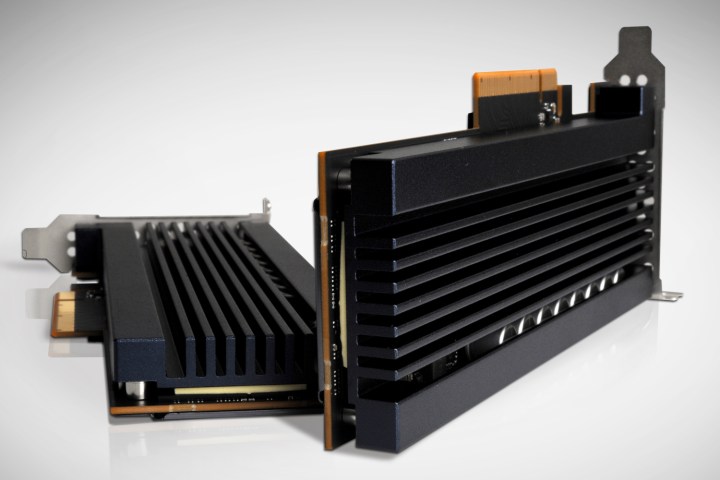
Based on hands-on reports from the convention, Samsung will initially offer select customers a Z-SSD unit with only 800GB of storage. Previous rumors suggested that Samsung had 1TB, 2TB, and 4TB variants in the works, too, but there was no sign during the show that Samsung intends to produce those capacities in the near future.
On a more detailed level, the 800GB unit had a half-height form factor built for a PCI Express 3.0 slot with at least four lanes (PCIe 3.0 x4). Samsung added that the latency (presumably referring to read) would be 70 percent lower than NVM Express drives (NVMe). Here are a few additional numbers to chew on:
| Sequential read speed: | Up to 3.2 gigabytes per second |
| Sequential write speed: | Up to 3.2 gigabytes per second |
| Random read performance: | Up to 750,000 IOPS* |
| Random write performance: | Up to 160,000 IOPS |
*Input/output operations per second
What’s important to note is Samsung’s initial description of the Z-SSD in August. “Samsung’s Z-SSD shares the fundamental structure of V-NAND and has a unique circuit design and controller that can maximize performance, with four times faster latency and 1.6 times better sequential reading than the Samsung PM963 NVMe SSD,” the company briefly explained.
So far, there are no details regarding Samsung’s secret Z-NAND tech outside the comment posted above. Moreover, during a brief interview in August, the company wouldn’t confirm if Z-NAND used single-level-cell, multi-level-cell, or triple-level-cell technology. But Samsung did admit that Z-NAND “achieves peak performance at low queue depths, giving better performance across all workloads.”
Samsung’s latest fourth-gen V-NAND tech relies on a “stacked” vertical design packing multiple layers of memory cells like a skyscraper rather than distributing cells horizontally in a city grid fashion. Stacking layers of memory cells improves storage density because the capacity increases with each level despite the horizontal, physical constraints of the memory die.
Samsung said that its latest V-NAND technology now stacks 64 layers of memory cells, increasing the density of a single memory die to 512 gigabits. Right now, a single 3D XPoint memory die produced by the Intel/Micron duo consists of two cross-stitched 64-gigabit layers, totaling a mere 128 gigabits. Convert those numbers into gigabytes and Samsung’s V-NAND die has a 64GB capacity and Intel’s 3D XPoint die has a 16GB capacity.
But don’t expect to see Z-NAND used in mainstream products any time soon. Customers needing a boost in workloads on high-performance systems, such as “extremely insensitive” real-time analytics, will be the first to grab the Z-branded SSDs.


